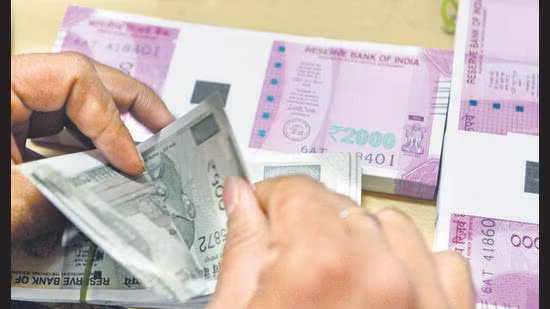- Courses
- GS Full Course 1 Year
- GS Full Course 2 Year
- GS Full Course 3 Year
- GS Full Course Till Selection
- Answer Alpha: Mains 2025 Mentorship
- MEP (Mains Enrichment Programme) Data, Facts
- Essay Target – 150+ Marks
- Online Program
- GS Recorded Course
- Polity
- Geography
- Economy
- Ancient, Medieval and Art & Culture AMAC
- Modern India, Post Independence & World History
- Environment
- Governance
- Science & Technology
- International Relations and Internal Security
- Disaster Management
- Ethics
- NCERT Current Affairs
- Indian Society and Social Issue
- NCERT- Science and Technology
- NCERT - Geography
- NCERT - Ancient History
- NCERT- World History
- NCERT Modern History
- CSAT
- 5 LAYERED ARJUNA Mentorship
- Public Administration Optional
- ABOUT US
- OUR TOPPERS
- TEST SERIES
- FREE STUDY MATERIAL
- VIDEOS
- CONTACT US
NGMA to Organise an Exhibition Chhatrapati Shivaji Maharaj
NGMA to Organise an Exhibition Chhatrapati Shivaji Maharaj
23-07-2024
Introduction
- The National Gallery of Modern Art (NGMA) organized an exhibition titled "Chhatrapati Shivaji Maharaj: Celebration of the 350th Anniversary of the Great Coronation" to commemorate the 350th anniversary of the grand coronation of Chhatrapati Shivaji Maharaj.
- The exhibition was held at NGMA, Jaipur House, New Delhi on June 6th, 2024, at 5:30 P.M.
The Exhibition
- The exhibition features a collection of 115 masterpieces from the collection of Shri. Deepak Gore, created in collaboration with the renowned artist duo, Shri Shrikant Chougule and Shri Gautam Chougule, and historian Padma Vibhushan Shri Balwant Moreshwar Purandare.
- This exhibition is a result of a 16-year project that began in 2000, aimed at creating a powerful, locally-rooted narrative about the legend of Shivaji Maharaj.
- The collection includes larger-than-life and often mesmerizing canvases depicting the life and times of Shivaji Maharaj, including his coronation, military and naval events, and his administrative and benevolent activities.
The Narrative
- The exhibition opens with a pivotal scene depicting a young Shivaji, barely fourteen, receiving the saffron flag (Bhagwa Jhanda) from his father Shahaji, symbolizing the birth of a dream, an independent Maratha kingdom, Swarajya.
- The narrative then pans through a series of major military and naval events, including the strategic genius of selecting the Fort of Raigad as his bastion.
- The exhibition also highlights Shivaji's multifaceted leadership, including his acts of benevolence and his defiance against European domination.
- A dedicated section acquaints visitors with the rulers who were Shivaji's contemporaries and played significant roles in shaping his era.
- The exhibition features paintings of Fort Raigad in various moods and seasons, and a visually striking painting of Fort Attock (in present-day Pakistan), completing Shivaji's grand vision of Swarajya, stretching from the Indus to the Kaveri.
- Several preparatory portraits of Shivaji, including one in Jehangir Vazifdar's signature style, offer a closer look at the man behind the legend.
About Chhatrapati Shivaji Maharaj
- Founder of the Maratha Empire in western India.
- Born on February 19, 1630, to Shahaji Bhosle and Jijabai in the fort of Shivneri, near the city of Junnar in the Pune district.
- With his valor and great administrative skills, Shivaji carved out an enclave from the declining Adilshahi sultanate of Bijapur, which eventually became the genesis of the Maratha Empire.
- Known as the Father of the Indian Navy, he was the first to realize the importance of having a naval force and established a navy and forts at the coastline to defend the Konkan side of Maharashtra.
- A secular ruler accommodating all religions, he had numerous Muslim soldiers in his army.
- Shivaji was a dependable supporter of women and their honor; anyone under his rule caught violating women's rights was severely punished.
- He had a council of ministers (Asht Pradhan) to advise him on state matters but was not bound by it.
- Widely known for his guerrilla warfare tactics, he was called the 'Mountain Rat'.
Key Facts about Raigad Fort
- Location: Hill fort situated in Raigad district, Maharashtra, in the Sahyadri mountain ranges or the western ghats.
- Known as the ‘Gibraltar of the East’, one of the strongest-ever fortresses of the Deccan Plateau.
- Seized by Chhatrapati Shivaji Maharaj in 1656 from Chandraraoji More, the King of Jawali.
- Developed several structures and constructions in Raigad, making it his capital in 1674 after being crowned as the king of the entire Maratha Kingdom, and later the Maratha Empire.
- The fort was the location for an armed campaign by the British East India Company in 1765 and was looted and destroyed by British forces on May 9, 1818.
- Overlooks an artificial lake known as the ‘Ganga Sagar Lake’.
Who was Ashta Pradhan?
- The Ashta Pradhan (also termed Asta Pradhan or the Council of 8) was a council of eight ministers that administered the Maratha empire.
- Formed in 1674 by their king, Shivaji.
- Discharged functions similar to a modern council of ministers, regarded as one of the first successful instances of ministerial delegation in India.



